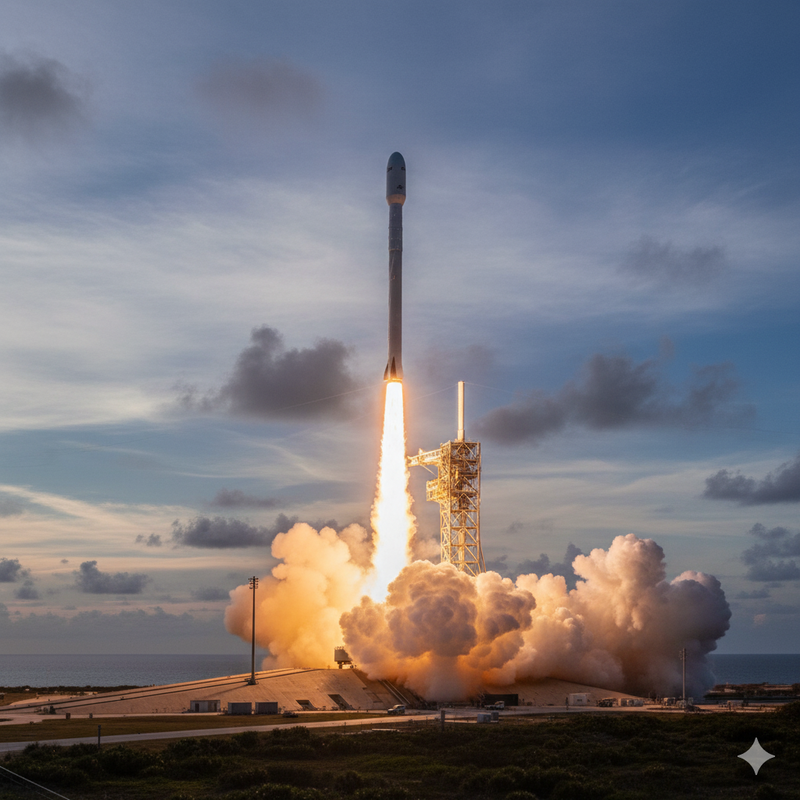
Finance & Business
SpaceX Falcon 9 Successfully Launches International Satellite to Monitor Rising Sea Levels in 2025
SpaceX Falcon 9 Successfully Launches International Satellite to Monitor Rising Sea Levels in 2025On November 15, 2025, at 8:47 PM EST, a battle-tested SpaceX Falcon 9 rocket lifted off from Space Launch Complex 40 (SLC-40) at Cape Canaveral Space Force Station, Florida. Minutes later, it successfully deployed the Surface Water and Ocean Topography follow-on mission — known as SWOT-2 — into a precise 891 km sun-synchronous orbit. This joint mission between NASA, the European Space Agency (ESA), French space agency CNES, and the Canadian Space Agency (CSA) represents one of the most important climate-monitoring satellites launched this decade.Why We Urgently Need Better Sea Level Data in 2025Global sea levels are rising faster than at any point in the last 3,000 years. According to the latest IPCC reports and NASA’s Sea Level Change Portal, the average rate of rise has accelerated to more than 4.8 mm per year. If emissions continue unchecked, coastal communities from Miami to Maldives could face 0.8–2 meters of rise by 2100, displacing hundreds of millions of people and causing trillions in economic damage.The original SWOT satellite, launched by SpaceX in December 2022, revolutionized our understanding by mapping 90% of Earth’s surface water at centimeter-level resolution for the first time. Now, SWOT-2 takes it further with upgraded instruments, artificial intelligence for real-time data processing, and extended coverage over polar ice sheets — areas critically affected by Greenland and Antarctic melting.Key Upgrades in the SWOT-2 SatelliteNext-gen Ka-band Radar Interferometer (KaRIn) with 50% better resolution
Dual-frequency Poseidon altimeter for improved accuracy over ice
Onboard AI that prioritizes and compresses the most urgent climate data
Extended mission life of 7+ years
Enhanced monitoring of coastal zones, rivers, lakes, and reservoirs
These improvements will help scientists predict flooding risks, track hurricane intensification, manage freshwater resources, and refine climate models with never-before-seen precision.Falcon 9: The Workhorse Making Climate Science AffordableThis mission marked the 19th flight of Falcon 9 booster B1081 — a perfect example of SpaceX’s reusable rocket technology in action. Just 8 minutes after liftoff, the first stage performed a flawless boost-back burn and landed on the droneship “Just Read the Instructions” stationed in the Atlantic. The second stage continued to orbit and deployed SWOT-2 exactly on schedule.Thanks to reusability, the cost of putting a satellite like SWOT-2 into orbit has dropped dramatically compared to traditional expendable rockets. This cost reduction allows space agencies to launch more climate-monitoring missions, more frequently — exactly what the planet needs right now.What SWOT-2 Data Will Tell UsOnce fully operational in early 2026, SWOT-2 will deliver:Global sea surface height measurements accurate to 1 cm over 1 km² areas
Detailed mapping of ocean eddies and currents that influence weather patterns
Weekly updates on lake and river levels critical for agriculture and flood forecasting
Direct observation of how fast ice sheets are contributing to sea level rise
This data will be freely available to scientists, governments, and the public worldwide, continuing the open-science tradition started by the original SWOT mission.The Growing Role of Commercial Space in Climate ActionSpaceX has now launched over 50 Earth-observation and climate-related satellites for NASA, NOAA, ESA, and private companies. The reliability of Falcon 9 (currently holding a 99.5% success rate across 400+ launches) combined with Starlink’s revenue stream has turned SpaceX into the go-to launch provider for urgent environmental missions.Looking Ahead: More Climate Satellites on Falcon 9The successful SWOT-2 launch clears the path for several upcoming missions:NISAR (NASA-ISRO radar imaging satellite) — early 2026
PACE-2 ocean color and aerosol mission — mid 2026
ESA’s EarthCARE follow-on — late 2026
Every one of these is booked on Falcon 9.Final ThoughtsAs sea levels continue their relentless rise, tools like SWOT-2 give humanity something invaluable: accurate, timely data to adapt, mitigate, and plan. And thanks to SpaceX’s reusable Falcon 9, we can now afford to put these crucial eyes in the sky faster and more often than ever before.The skies above Earth are getting smarter — and just in time.
Comments (0)
Please log in to comment
No comments yet. Be the first!